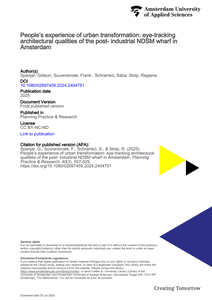Void street interfaces (VSIs) – building plinths with restricted visual interaction, accessibility, and public use – constitute an urban feature often associated with undermining the public domain, limiting free access and preventing interaction between social groups. Moreover, VSIs have been described as products of inequality designed to segregate and hinder integration between public and private urban spaces. This study assesses VSIs across six cities in Brazil, a country notable for its profound inequality and sociospatial fragmentation. The main aims of this research are: (i) to develop and test a predictive model for VSIs using socioeconomic indicators drawn from open-source ground-truth data; (ii) to identify the variance of VSI within selected case studies. In the development phase of the predictive model, data from the city of Recife are used to build the model. The testing phase involves the analysis of VSIs in the cities of Fortaleza, Salvador, Belo Horizonte, Curitiba and Porto Alegre. The model can potentially assist urban planners in better understanding and locating VSIs and mitigating undesirable outcomes.
MULTIFILE
An important step towards improving performance while reducing weight and maintenance needs is the integration of composite materials into mechanical and aerospace engineering. This subject explores the many aspects of composite application, from basic material characterization to state-of-the-art advances in manufacturing and design processes. The major goal is to present the most recent developments in composite science and technology while highlighting their critical significance in the industrial sector—most notably in the wind energy, automotive, aerospace, and marine domains. The foundation of this investigation is material characterization, which offers insights into the mechanical, chemical, and physical characteristics that determine composite performance. The papers in this collection discuss the difficulties of gaining an in-depth understanding of composites, which is necessary to maximize their overall performance and design. The collection of articles within this topic addresses the challenges of achieving a profound understanding of composites, which is essential for optimizing design and overall functionality. This includes the application of complicated material modeling together with cutting-edge simulation tools that integrate multiscale methods and multiphysics, the creation of novel characterization techniques, and the integration of nanotechnology and additive manufacturing. This topic offers a detailed overview of the current state and future directions of composite research, covering experimental studies, theoretical evaluations, and numerical simulations. This subject provides a platform for interdisciplinary cooperation and creativity in everything from the processing and testing of innovative composite structures to the inspection and repair procedures. In order to support the development of more effective, durable, and sustainable materials for the mechanical and aerospace engineering industries, we seek to promote a greater understanding of composites.
DOCUMENT

Urban densification continues unabated, even as the possible consequences for users’ eye-level experiences remain unknown. This study addresses these consequences. In a laboratory setting, images of the NDSM wharf were shown to university students primed for one of three user groups: residents, visitors and passers-by. Their visual experiences were recorded using eye-tracking and analyzed in combination with surveys on self-reported appreciation and restorativeness. On-site surveys were also administered among real users. The results reveal distinct eye-movement patterns that point to the influence of environmental roles and tasks and how architectural qualities steer people’s visual experience, valence and restoration.
DOCUMENT
